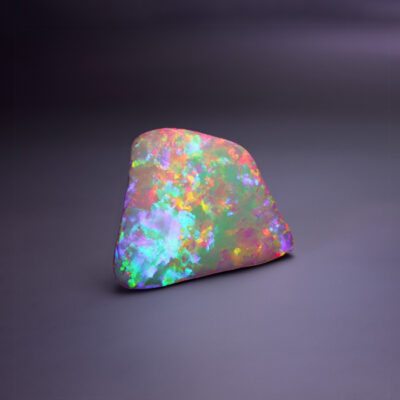 In Greek Mythology Opals were said to be the tears of Zeus, the God of Lightning. They formed when, after winning a battle against the Titans, he shed tears of joy which turned to Opal as they landed upon Earth. In truth, they formed when seasonal rains drenched dry ground in regions such as Australia’s semi-desert “outback.” The rain soaked deep into underground rock, carrying dissolved silica downward. Over the course of many dry seasons most of the water evaporated, leaving deposits of solid silica in the cracks and between the layers of underground sedimentary rock. The silica deposits formed opal.
In Greek Mythology Opals were said to be the tears of Zeus, the God of Lightning. They formed when, after winning a battle against the Titans, he shed tears of joy which turned to Opal as they landed upon Earth. In truth, they formed when seasonal rains drenched dry ground in regions such as Australia’s semi-desert “outback.” The rain soaked deep into underground rock, carrying dissolved silica downward. Over the course of many dry seasons most of the water evaporated, leaving deposits of solid silica in the cracks and between the layers of underground sedimentary rock. The silica deposits formed opal.
Facts:
- Opal is known for its unique display of flashing rainbow colors called play-of-color. There are two main classes of opal: precious and common. Precious opal has an iridiscent effect as it’s made up of sub-microscopic spheres stacked in a grid-like pattern. As the lightwaves travel between the spheres, the waves diffract, or bend. When they bend, they break up into the colors of the rainbowOpal.
- There are 5 main sub-types of Opal: 1. White or light opal; 2. Black opal; 3. Fire opal; 4. Boulder opal; 5. Crystal or water opal
- It has a high concentration of water, anwhere from 3 to 21%.
- It’s the national gemstone of Australia.
- It’s one of the birth stones of October.
- It’s said to grant invisibility if wrapped in a fresh bay leaf and held in one’s hand. As a result, it was seen as the patron gemstone for thieves during the medieval period.
- Chemistry: SiO2 nH2O
- Sources: GIA.edu, AmericanGemSociety.org, Wikipedia.org

